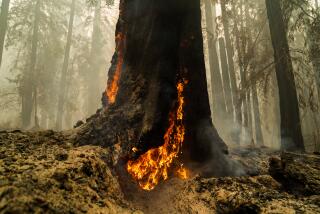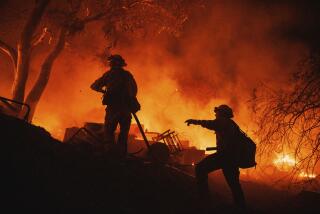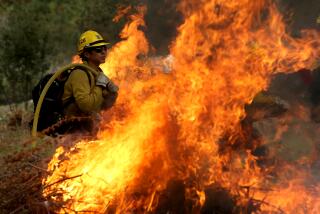As another brutal fire season rages, 4 new books bring context and consolation
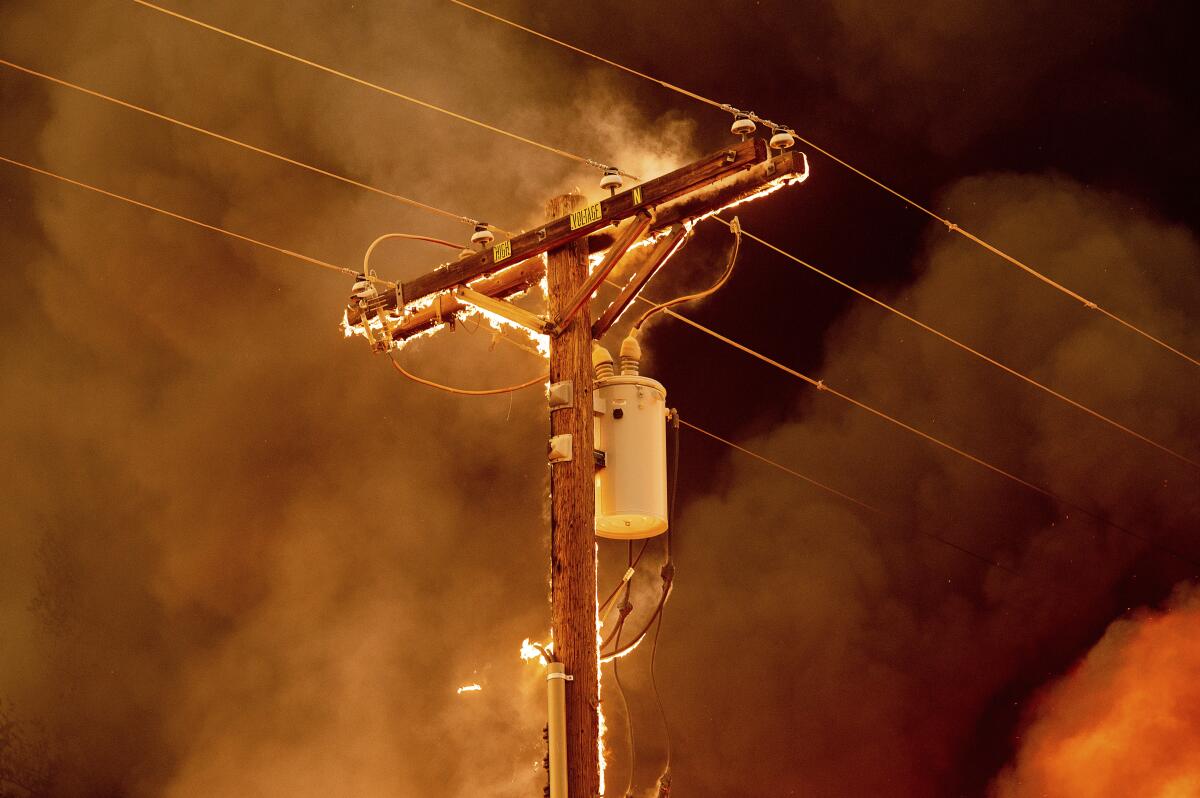
On the Shelf
Four New Books on Fire
Introduction to Fire in California: Second Edition
By David Carle
University of California: 248 pages, $25
The Pyrocene
By Stephen J. Pyne
University of California: 192 pages, $27
Paradise
By Lizzie Johnson
Crown: 432 pages, $28
Paradise on Fire
By Jewell Parker Rhodes
Little Brown: 256 pages, $17
If you buy books linked on our site, The Times may earn a commission from Bookshop.org, whose fees support independent bookstores.
Here we go again: The West is on fire. Oregon’s smoke is obscuring the skies over New York, and the California Department of Forestry and Fire Protection reported earlier this month that more of California had burned this year than by the same point in 2020 — before fire season had even begun in earnest. After decades of earthquakes serving as the Golden State’s preeminent form of natural disaster, the mythic counterweight to California’s temperate weather and gorgeous vistas, wildfires are poised to take their place in our collective nightmares, supplanting the Big One as the end of life as we know it here.
So it’s no surprise that there are a number of books on the topic coming out this summer and fall, ranging from academic studies to journalistic investigations to stories for children, all aimed at helping us figure out how to face up to our new reality.
For adults, the best place to start is probably a basic primer. “Introduction to Fire in California: Second Edition,” by David Carle, explains all the essentials: how fires start and spread, their traditional role in California’s ecosystems and the best ways to prepare your property to withstand wildfires. This update of the original, which was published in 2008, tracks the increasing urgency of the subject — the sharp uptick in catastrophic wildfires and the ways climate change is fueling them.
If you’re looking for a broader perspective, Stephen J. Pyne has been studying fire since before it regularly made headlines. He’s published 30-some books on the subject, starting with 1982’s “Fire in America: A Cultural History of Wildland and Rural Fire,” and his latest, out in September, is “The Pyrocene: How We Created an Age of Fire, and What Happens Next.” The new book takes the very long view — starting with the moment humans learned to control and utilize fire. Cooking unlocked previously unavailable calories (in raw meat and tough-to-digest veggies), which gave us the energy necessary to evolve bigger brains.

“By cooking food, hominins got small guts and big heads,” Pyne writes. “By cooking landscapes, they went to the top of the food chain,” using fire to alter land for agriculture. “Ultimately, by cooking the earth, sapients became a planetary power.” But that bargain may be Faustian, he argues, as our dependence on unchecked industrial combustion threatens to superheat the planet into an overdrive of uncontrolled, unsurvivable blazes.
Developed countries are moving too slowly to slash greenhouse gas emissions and fight climate change.
Pyne’s is an academic book, and it reads like one — fascinating but dense. A lay reader might not need the discourse on the proper naming of geologic epochs, but overall, it’s an excellent grounding in how fire functions, how we think about it and why that matters.
In Pyne’s hands, fire becomes more than simply a natural phenomenon: Among his metaphors is fire as a time traveler, burning carbon to release the planet’s geologic past into its environmental future. He also describes it as a near-biological phenomenon. “Like a virus, fire itself is not alive, but it relies on the living world to propagate. We often speak of an epidemic spreading like wildfire, but it makes equal sense to speak of a fire spreading like a plague, a contagion of combustion,” Pyne writes, in a passage that feels particularly resonant in a world scarred by COVID-19.
Lizzie Johnson offers a more immediate and emotionally devastating narrative in “Paradise: One Town’s Struggle to Survive an American Wildfire,” coming in August. Johnson, a staff writer at the San Francisco Chronicle, pulls together an encyclopedic study of the Camp Fire, which leveled the town of Paradise and claimed 85 lives in November 2018. Johnson combines a tick-tock of on-the-ground stories from the town’s residents and first responders with a broader look at the environmental conditions, urban planning decisions and bureaucratic mishaps that led to a succession of avoidable disasters. For instance, fewer than 20% of the town’s residents received an evacuation order even as flames swallowed their neighborhoods whole.
At times, “Paradise” reads like a thriller — particularly in the first third, as catastrophe looms and an unsuspecting populace goes about its day. But Johnson works to balance the imperative of narrative tension with respect for the unimaginable tragedy, and the resulting work is worth the emotional toll of reading it.
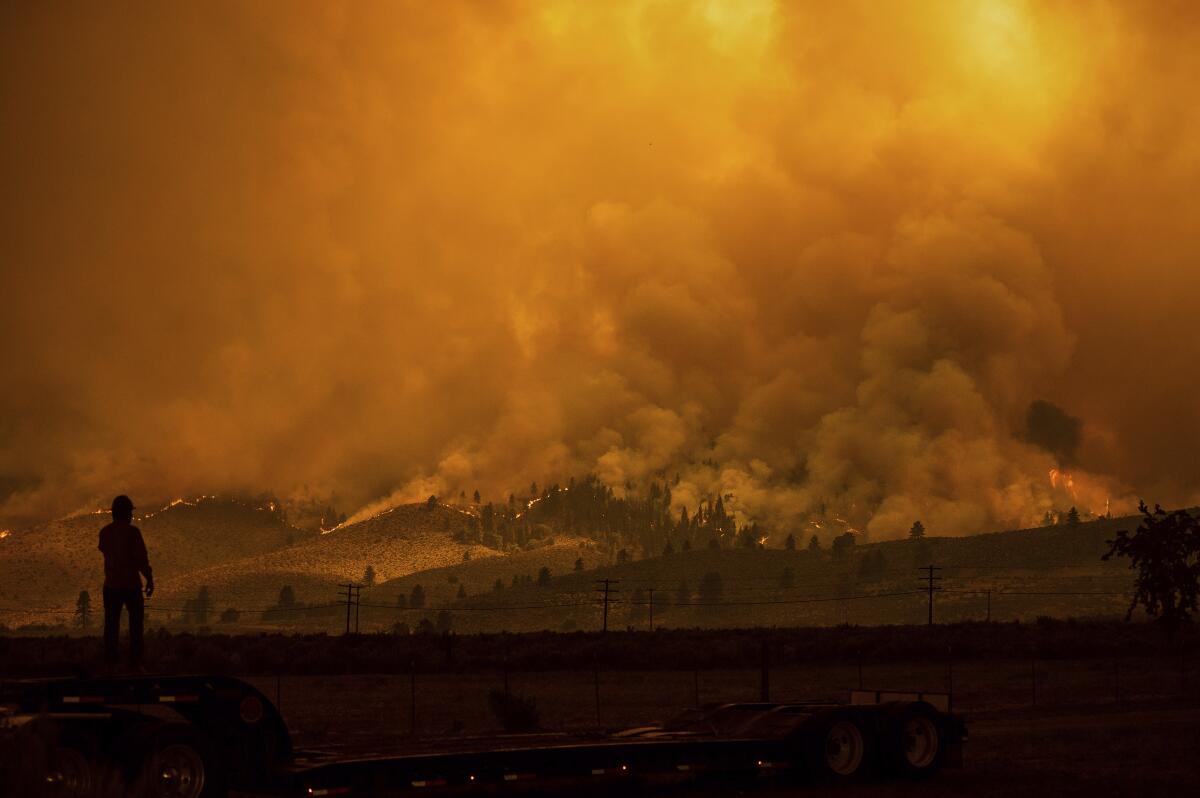
Finally, and most accessibly, Jewell Parker Rhodes, the bestselling author of “Ghost Boys” and seven other young-adult novels, has written a book about wildfires for younger readers. “Paradise on Fire,” out Sept. 14, follows Addy, a Black girl from the Bronx who’s spending the summer at a California wilderness camp, where she learns to love the outdoors — only to have a final camping trip threatened by a raging wildfire. Addy’s parents died in a house fire when she was younger. Ever since, she’s been obsessed with escape routes and mapmaking, so when disaster strikes and she’s separated from her counselors, she’s the one her friends depend on to get them back to safety.
The Dixie and Tamarack fires have chewed through nearly 100,000 acres with little containment, officials said Tuesday.
The book is sparsely written, poetic in its style; Addy’s narration thrums with the anxiety of her traumatic past, but she remains openhearted and curious. The book might speak particularly to Black kids like Addy, who, as her mentor puts it, “didn’t know they belonged in the wild.”
Despite the destruction, the narrative is fundamentally optimistic, rooted in the power of nature and community to bring us back to ourselves when we fear all is lost. “Landscapes,” Addy says early in the book, “I’ve seen them in books, paintings, but I’ve never felt one before.” Parker Rhodes makes sure her readers will feel her landscapes and encourages them to then go out and engage with their own.
Trying to convince a Californian to read a book about wildfires right now feels a little bit like selling ice to an Alaskan — if the ice were also a life-threatening horror they’d rather not think about. On the other hand, it can be helpful to process the world, and particularly its terror, not as a stream of adrenaline-spiked breaking news updates but as pieces of narrative, stories we know how to gather up and tell. Because the fires are not going anywhere, and we need to understand how we got here, as well as fortify ourselves against the bigger blazes that will come — as they inevitably will.
Romanoff is a writer and the author of several novels for young adults.
Lydia Millet, whose latest novel, “A Children’s Bible,” tackled climate change, reads new fiction on climate and argues against calling it a genre.
More to Read
Sign up for our Book Club newsletter
Get the latest news, events and more from the Los Angeles Times Book Club, and help us get L.A. reading and talking.
You may occasionally receive promotional content from the Los Angeles Times.



